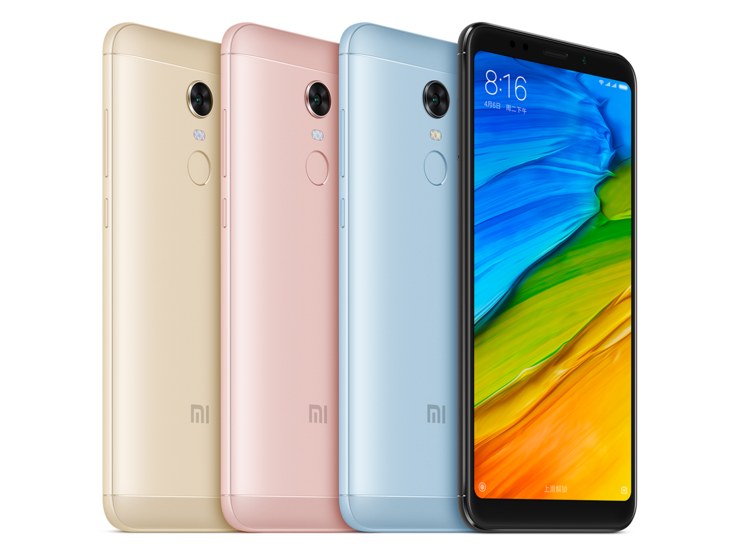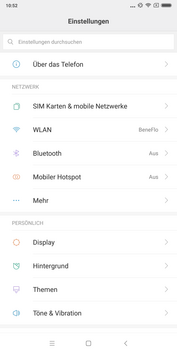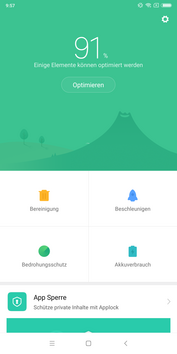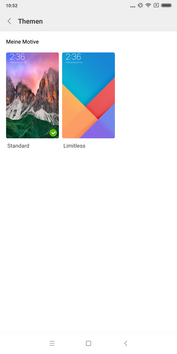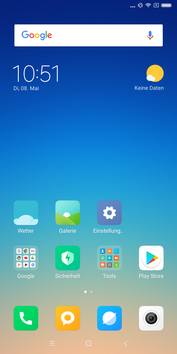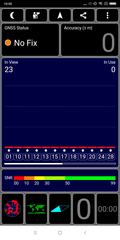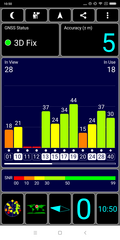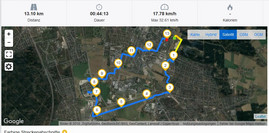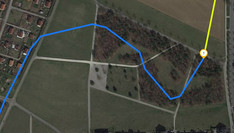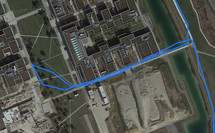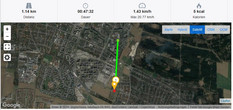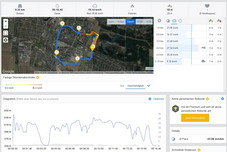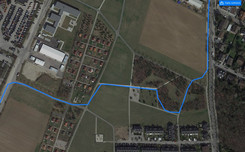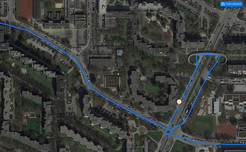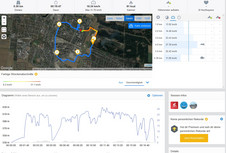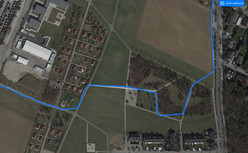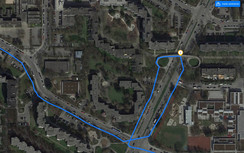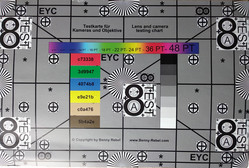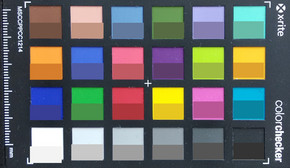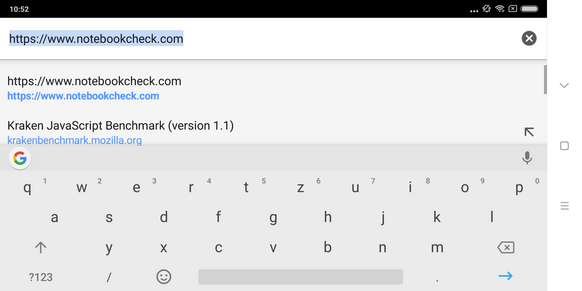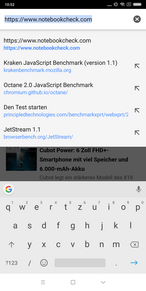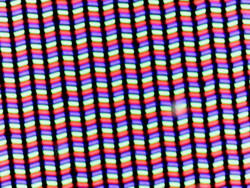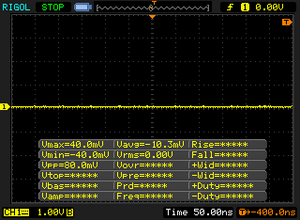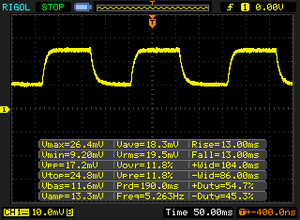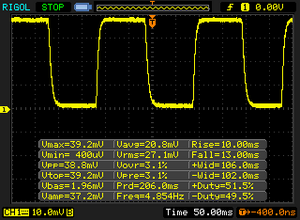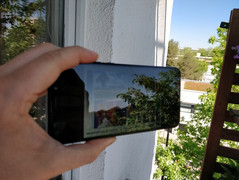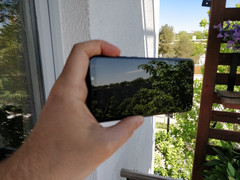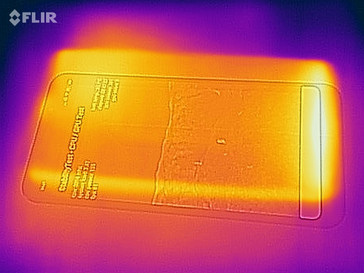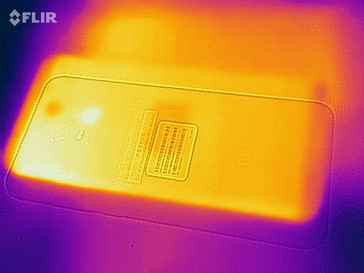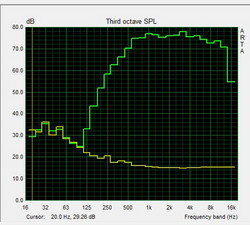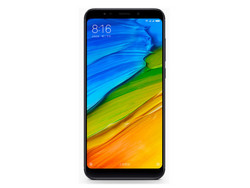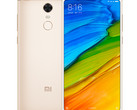Xiaomi Redmi 5 Plus Smartphone Review
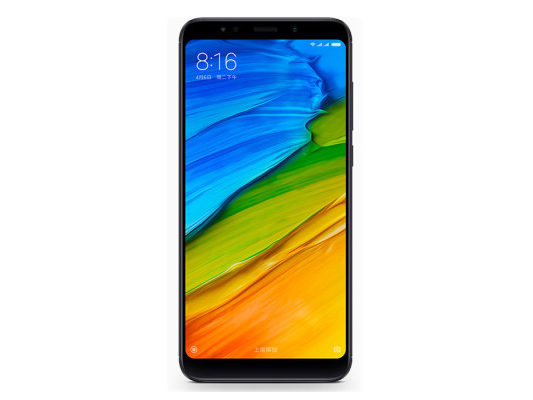
A long time ago, it was still an adventure to get smartphones of the Chinese manufacturer Xiaomi: The quite interesting devices such as the Xiaomi Mi Mix were only available as imports, had to be sent to China in case of a warranty repair, and did not always work with all the European LTE networks. At this point, the devices can be purchased from local online vendors without any trouble, and thanks to the global versions, nowadays you don't need to worry about the LTE reception. What remains still the same is that at an affordable price, you are getting a smartphone not everyone has.
Xiaomi's Redmi series is known particularly for its good price-performance ratio, and we are now looking more closely at the Xiaomi Redmi 5 Plus in this test. It is slightly larger and has a larger battery than the Redmi 5 and is supposed to convince by a high performance and a high-resolution 18:9 screen. For less than 200 Euros (~$236; starting at around $190 in the US), this sounds like a good offer. However, we want to get to the bottom of this and compare the Xiaomi smartphone with the Ulefone Power 3, the Maze Alpha X, the Gigaset GS370 Plus, and the Honor 9 Lite.
Case – Xiaomi Redmi 5 Plus with a very robust metal case
Currently there are three colors available in Europe: black, blue, and gold. Officially, the rose-gold version is not available in the West yet. The smartphone is surrounded by a metal case with a 2.5D glass front and with its rounded corners feels very nice in the hands. The weight is appropriate for its size and at 8.1 mm (~0.32 in), it is quite slim. We test the black version. The back of the Xiaomi Redmi 5 Plus has a matte surface that is fairly impervious to fingerprints. The case gives a robust impression with good workmanship. Indeed, neither pressure nor attempts at twisting can harm the device, which is quite impressive for the affordable price.
Equipment – The usual storage equipment
While 64 GB of storage and 4 GB of working memory are the standard at this price range, some smartphones in this segment already offer 6 GB of working memory. 55.9 GB of the storage is actually available for use, which is a decent value, and you can still insert a microSD card to expand the storage. However, in order to do that, you have to sacrifice a SIM slot, since our test unit supports dual SIM. App data cannot be transferred to the microSD and it can only be formatted as external storage.
Software – Android 7 and very little bloatware
Android 7.1.2 serves as the basis for MIUI Global, which is the adapted user interface of Xiaomi. The security patches on our Xiaomi phablet are at the level of March 3, 2018 and thus fairly current. There is supposed to be an update to Android 8.1 in the third quarter of 2018.
After a brief period of getting used to it, the operation of the MIUI surface should become easy, even for those who change from other Android user interfaces. The thing that took us most to get used to was the Settings, which are sorted differently. You will not find any excessive bloatware on the Redmi 5 Plus, and Xiaomi has merely preinstalled Microsoft Office and WPS Office. Whether the users need two different office programs is rather questionable, though. Otherwise, there are a couple of tools from the manufacturer, such as a screen recorder, a compass, or Mi Drop with which you can send or receive files via WLAN.
Communication and GPS – Redmi 5 Plus with slightly slow WLAN
It is unfortunate that there is no 802.11-ac WLAN support in the Xiaomi smartphone, but this is not unusual in this price range. Only the Maze Alpha X can score with that. At least you can also use the less trafficked 5-GHz band. However, the WLAN transfer rates are more in the lower range in our test with our Linksys EA8500 reference router. While rendering pages takes quite a long time already near the router, the full reception is available. At a distance of 10 meters (~33 ft) and through three walls, the reception still remains very strong, but the time it takes to render pages remains unchanged and quite slow.
The Xiaomi Redmi 5 Plus supports LTE Cat. 6 with speeds of up to 300 MBit/s during download and up to 50 MBit/s during upload. While VoLTE is supported, you cannot use Wi-Fi to call directly. With 11 LTE bands, the Xiaomi Redmi 5 Plus is well equipped and also suited for travel. We did not have any problems with the mobile reception during our testing.
| Networking | |
| iperf3 transmit AX12 | |
| Gigaset GS370 Plus | |
| Ulefone Power 3 | |
| Maze Alpha X | |
| Xiaomi Redmi 5 Plus | |
| Honor 9 Lite | |
| iperf3 receive AX12 | |
| Gigaset GS370 Plus | |
| Ulefone Power 3 | |
| Maze Alpha X | |
| Xiaomi Redmi 5 Plus | |
| Honor 9 Lite | |
Indoors, the Xiaomi Redmi 5 Plus is unable to locate us, and outdoors it takes quite long to locate us exactly down to 5 m (~16 ft). In Google Maps our location and compass direction are correct in our short test.
To evaluate the locating capabilities of the Xiaomi Redmi 5 Plus in more detail, we take the smartphone on a bike tour and also pack the Garmin Edge 520 professional navigation device, in order to have a comparison. However, our first attempt failed, since using the Runtastic app, the Redmi 5 Plus refused to locate us and record our path. A second attempt also resulted in barely one bar and one unusable short distance measurement. We spent some time awkwardly deactivating all the power saving modes in the menu which block the background activity of the app, and lo and behold, we got acceptable results in our third attempt. While the accuracy is not perfect, it is quite acceptable for an affordable smartphone. However, it is not only an annoyance for inexperienced users that you have to awkwardly try various system settings in order to find the one that enables the locating.
Telephone Functions and Voice Quality – Xiaomi smartphone with good voice quality
As its start screen, the Xiaomi Telephone app shows the phone keyboard with the recent calls above that. You can directly search for your contacts in a small Search field or you can go into the separate Contacts tab. While the app offers all the basic options and quite a lot of settings, it is not superior to Google's standard app.
The voice quality using the internal ear piece is good. If necessary, the voice of the conversation partner can be reproduced quite loud, but still remains clear and understandable even at a high volume. The microphone tends to distort a bit when speaking very loud, but also reproduces our voice decently overall. The voice of our conversation partner is also clear and understandable using the speaker and microphone. However, the microphone has some problems with quiet voices and also produces some clearly noticeable noise. Overall, the voice quality on the part of the Xiaomi Redmi 5 Plus user in particular is really good for such an affordable device.
Cameras – Average image quality
With the cameras, Xiaomi has followed more along the standards of its price range, rather than integrating something exceptional. There is a 12-MP camera on the back and a 5-MP camera in the front, but at least that has an LED flash. You can find cameras with a higher resolution in the other devices; the Honor 9 Lite even has two dual cameras.
The main camera inside the Redmi 5 Plus illuminates dark areas quite well, the particularly large pixels are supposed to make sure of that. On the other hand, the details in the bright areas often get lost because of this, as the sky in the flower picture shows. In cameras of higher-quality smartphones, details often appear sharper and are reproduced more cleanly. However, because the colors are quite good, the camera images are okay for the price range. You can record 4K videos at 30 FPS. While the exposure is decent here, the auto-focus is pumping quite a bit before it can put an object into focus.
The front camera takes pictures with the colors being slightly too pale, and due to the fixed focus, it is also difficult to get them sharp.
Looking at the images taken under controlled light conditions in the lab, we like the main camera to some degree. While the sharpness of the details could have been higher and the color areas appear a bit spotty, the fact that there are hardly any fringes around the objects and the text on a color background is reproduced fairly cleanly are clearly positive points.
The color reproduction is slightly too pale, but the areas are overall reproduced reasonably.
Accessories and Warranty – Xiaomi warranty cases now easier
Xiaomi includes a charger, a charging cable, a SIM tool, and a protective Silicone case.
Xiaomi offers a 24-month warranty. Currently, it is best to turn to the vendor for this, since at this point Xiaomi does not have a branch office in central Europe yet. However, Austria, Italy, and France are supposed to become officially Xiaomi countries in the next few weeks, and the rest of Europe is supposed to follow shortly. So the devices will no longer need to be sent by the customer to China for a warranty repair.
Please see our Guarantees, Return policies and Warranties FAQ for country-specific information.
Input Devices and Operation – Fast fingerprint sensor and good navigation
Xiaomi is using Google's GBoard as the keyboard app, which is at least a solid choice since the standard keyboard of the operating system manufacturer offers many features and input options.
Using a menu called Quick Ball, which can be freely placed anywhere on the screen, the user can quickly access some functions that are freely configurable. You can specify gestures or key combinations for various actions such as starting the camera. The menu keys are displayed on the screen, but can be hidden in some apps, if so desired. There is also a single-hand mode for smaller hands.
The fingerprint sensor is at the back of the device and can be easily felt. While it unlocks the smartphone from Standby and is very fast, it cannot be used for navigation.
The touchscreen is also quite responsive in the corners and reacts promptly to our inputs. The hardware buttons for volume and standby are on the right side of the case and have a clear pressure point.
Display – Good color reproduction, even brightness distribution
Xiaomi has equipped the Redmi 5 Plus with a very bright 18:9 display, and the brightness distribution is also very even at 96%, so that large color areas appear evenly lit. The resolution of 2160x1080 pixels is standard for this price range at this point and corresponds to a slightly stretched Full HD resolution. Due to the format of the display, video which usually has the 16:9 format never fills the whole screen, but is always displayed with narrow black strips on the sides.
| |||||||||||||||||||||||||
Brightness Distribution: 96 %
Center on Battery: 613 cd/m²
Contrast: 1088:1 (Black: 0.57 cd/m²)
ΔE ColorChecker Calman: 3.46 | ∀{0.5-29.43 Ø4.77}
ΔE Greyscale Calman: 3.9 | ∀{0.09-98 Ø5}
99.6% sRGB (Calman 2D)
Gamma: 2.073
CCT: 7230 K
| Xiaomi Redmi 5 Plus IPS, 2160x1080, 6" | Maze Alpha X IPS, 2160x1080, 6" | Ulefone Power 3 IPS, 2160x1080, 6" | Honor 9 Lite IPS, 2160x1080, 5.7" | Gigaset GS370 Plus IPS, 1440x720, 5.7" | |
|---|---|---|---|---|---|
| Screen | -93% | -4% | 1% | -52% | |
| Brightness middle (cd/m²) | 620 | 497 -20% | 494 -20% | 627 1% | 472 -24% |
| Brightness (cd/m²) | 612 | 478 -22% | 485 -21% | 622 2% | 468 -24% |
| Brightness Distribution (%) | 96 | 87 -9% | 87 -9% | 82 -15% | 92 -4% |
| Black Level * (cd/m²) | 0.57 | 0.6 -5% | 0.33 42% | 0.41 28% | 0.73 -28% |
| Contrast (:1) | 1088 | 828 -24% | 1497 38% | 1529 41% | 647 -41% |
| Colorchecker dE 2000 * | 3.46 | 11.6 -235% | 5.1 -47% | 4.5 -30% | 6.8 -97% |
| Colorchecker dE 2000 max. * | 7.88 | 22.1 -180% | 9.9 -26% | 7 11% | 14.5 -84% |
| Greyscale dE 2000 * | 3.9 | 13.5 -246% | 3.5 10% | 5.1 -31% | 8.2 -110% |
| Gamma | 2.073 106% | 2.93 75% | 2.16 102% | 2.26 97% | 2.13 103% |
| CCT | 7230 90% | 9955 65% | 7253 90% | 7201 90% | 7924 82% |
* ... smaller is better
Screen Flickering / PWM (Pulse-Width Modulation)
| Screen flickering / PWM not detected | |||
In comparison: 53 % of all tested devices do not use PWM to dim the display. If PWM was detected, an average of 8083 (minimum: 5 - maximum: 343500) Hz was measured. | |||
We did not notice any display flickering at a lowered brightness. The contrast and white balance can be adjusted in three steps respectively. While the standard white balance produces a slight blue tint, this is only minimal compared to other smartphone displays.
The color deviations are also relatively small using the standard settings, and our spectral photometer only shows a stronger reading for bright blue tones and to a lesser extent for red. So for amateur photographers who are not too ambitious, the display should be sufficient to check the color accuracy of their own pictures, especially since the approximation value for the sRGB color space coverage is also quite high.
Display Response Times
| ↔ Response Time Black to White | ||
|---|---|---|
| 13 ms ... rise ↗ and fall ↘ combined | ↗ ms rise | |
| ↘ ms fall | ||
| The screen shows good response rates in our tests, but may be too slow for competitive gamers. In comparison, all tested devices range from 0.1 (minimum) to 240 (maximum) ms. » 32 % of all devices are better. This means that the measured response time is better than the average of all tested devices (20.2 ms). | ||
| ↔ Response Time 50% Grey to 80% Grey | ||
| 11.5 ms ... rise ↗ and fall ↘ combined | ↗ ms rise | |
| ↘ ms fall | ||
| The screen shows good response rates in our tests, but may be too slow for competitive gamers. In comparison, all tested devices range from 0.165 (minimum) to 636 (maximum) ms. » 24 % of all devices are better. This means that the measured response time is better than the average of all tested devices (31.6 ms). | ||
The high brightness allows you to still see the display content even in bright surroundings. However, you have to take the strong reflections on the screen into account. The viewing angles from the side are good, you can still see the image from steep viewing angles, and there will be some minimal brightness changes at most.
Performance – The Redmi 5 Plus performs at mid-range level
The Xiaomi Redmi 5 Plus is equipped with a mid-range SoC from Qualcomm, the Snapdragon 625. All our comparison devices use either SoCs from MediaTek or HiSilicon, so that the Redmi 5 Plus offers a certain unique feature here. Correspondingly, with eight cores and a maximum clock speed of 2000 MHz the smartphone offers slightly more performance than its competitors. In some benchmarks, it is even eye to eye with the Honor 9 Lite at the top of the comparison field. The storage speed appears to be a limiting factor for the overall system performance, and we will look more closely at this in a moment.
As the graphics unit, an Adreno 506 is used which offers the customary performance at this price range.
| AnTuTu v6 - Total Score (sort by value) | |
| Xiaomi Redmi 5 Plus | |
| Maze Alpha X | |
| Ulefone Power 3 | |
| Honor 9 Lite | |
| Gigaset GS370 Plus | |
| Average Qualcomm Snapdragon 625 (59867 - 68348, n=17) | |
| AnTuTu v7 - Total Score (sort by value) | |
| Xiaomi Redmi 5 Plus | |
| Maze Alpha X | |
| Ulefone Power 3 | |
| Honor 9 Lite | |
| Gigaset GS370 Plus | |
| Average Qualcomm Snapdragon 625 (65759 - 81789, n=6) | |
| PCMark for Android | |
| Work performance score (sort by value) | |
| Xiaomi Redmi 5 Plus | |
| Maze Alpha X | |
| Ulefone Power 3 | |
| Honor 9 Lite | |
| Gigaset GS370 Plus | |
| Average Qualcomm Snapdragon 625 (4596 - 7846, n=16) | |
| Work 2.0 performance score (sort by value) | |
| Xiaomi Redmi 5 Plus | |
| Maze Alpha X | |
| Ulefone Power 3 | |
| Honor 9 Lite | |
| Gigaset GS370 Plus | |
| Average Qualcomm Snapdragon 625 (4626 - 5558, n=14) | |
| GFXBench 3.1 | |
| on screen Manhattan ES 3.1 Onscreen (sort by value) | |
| Xiaomi Redmi 5 Plus | |
| Maze Alpha X | |
| Ulefone Power 3 | |
| Honor 9 Lite | |
| Gigaset GS370 Plus | |
| Average Qualcomm Snapdragon 625 (3.1 - 14, n=17) | |
| Average of class Smartphone (11 - 166, n=157, last 2 years) | |
| 1920x1080 Manhattan ES 3.1 Offscreen (sort by value) | |
| Xiaomi Redmi 5 Plus | |
| Maze Alpha X | |
| Ulefone Power 3 | |
| Honor 9 Lite | |
| Gigaset GS370 Plus | |
| Average Qualcomm Snapdragon 625 (3.5 - 14, n=17) | |
| Average of class Smartphone (8.4 - 413, n=156, last 2 years) | |
In terms of the browser speed, the Redmi 5 Plus falls behind the Honor 9 Lite and the Maze Alpha X and remains in the middle of the comparison field. We are using Google's Interland in order to test a demanding HTML-5 website on the device. Indeed, there are some noticeable delays while loading the pages, some slight stutters during animations, and even some difficulties during navigation. So for anyone who surfs a lot on the internet, the Redmi 5 Plus might not be the best choice.
| JetStream 1.1 - Total Score | |
| Maze Alpha X (Chrome Version 64) | |
| Average Qualcomm Snapdragon 625 (21.3 - 31.8, n=17) | |
| Honor 9 Lite (Chrome 63) | |
| Xiaomi Redmi 5 Plus (Chrome 66) | |
| Ulefone Power 3 (Standardbrowser 7.1.1) | |
| Gigaset GS370 Plus (Chrome 63) | |
| Octane V2 - Total Score | |
| Average of class Smartphone (2228 - 126661, n=195, last 2 years) | |
| Maze Alpha X (Chrome Version 64) | |
| Honor 9 Lite (Chrome 63) | |
| Average Qualcomm Snapdragon 625 (3781 - 4979, n=17) | |
| Xiaomi Redmi 5 Plus (Chrome 66) | |
| Gigaset GS370 Plus (Chrome 63) | |
| Ulefone Power 3 (Standardbrowser 7.1.1) | |
| Mozilla Kraken 1.1 - Total | |
| Ulefone Power 3 (Standardbrowser 7.1.1) | |
| Gigaset GS370 Plus (Chrome 63) | |
| Xiaomi Redmi 5 Plus (Chrome 66) | |
| Honor 9 Lite (Chrome 63) | |
| Maze Alpha X (Chrome Version 64) | |
| Average Qualcomm Snapdragon 625 (8028 - 12194, n=17) | |
| Average of class Smartphone (257 - 28190, n=155, last 2 years) | |
| WebXPRT 2015 - Overall | |
| Xiaomi Redmi 5 Plus (Chrome 66) | |
| Honor 9 Lite (Chrome 63) | |
| Average Qualcomm Snapdragon 625 (60 - 113, n=12) | |
| Ulefone Power 3 (Standardbrowser 7.1.1) | |
* ... smaller is better
In terms of storage, the Redmi 5 Plus prefers reading over writing, at least if you look at the achieved speeds. While our reference microSD, a Toshiba Exceria Pro M501, achieves good read rates, writing is a bit slow. Primarily the transfer rates during random writing stand out negatively for the internal storage.
| Xiaomi Redmi 5 Plus | Maze Alpha X | Ulefone Power 3 | Honor 9 Lite | Gigaset GS370 Plus | Average 64 GB eMMC Flash | Average of class Smartphone | |
|---|---|---|---|---|---|---|---|
| AndroBench 3-5 | 8% | 36% | 136% | 15% | 56% | 1663% | |
| Sequential Read 256KB (MB/s) | 270 | 247.4 -8% | 294.6 9% | 269.6 0% | 284.9 6% | 277 ? 3% | 2248 ? 733% |
| Sequential Write 256KB (MB/s) | 194.5 | 162.2 -17% | 214.9 10% | 138.2 -29% | 182.4 -6% | 178.4 ? -8% | 1887 ? 870% |
| Random Read 4KB (MB/s) | 79.5 | 70.3 -12% | 61.4 -23% | 68.4 -14% | 48.4 -39% | 60.7 ? -24% | 299 ? 276% |
| Random Write 4KB (MB/s) | 7.1 | 11.61 64% | 21.25 199% | 66.8 841% | 17.1 141% | 33.8 ? 376% | 346 ? 4773% |
| Sequential Read 256KB SDCard (MB/s) | 84.4 | 81 ? -4% | 81.8 ? -3% | 83.1 ? -2% | 76.5 ? -9% | 77.4 ? -8% | |
| Sequential Write 256KB SDCard (MB/s) | 59.5 | 74 ? 24% | 71.9 ? 21% | 71.9 ? 21% | 56.1 ? -6% | 58.3 ? -2% |
Games – No 60-FPS gaming
An ability to play games smoothly at 60 FPS is not a strength of the Xiaomi smartphone: In "Arena of Valor" we are not offered the high-frame rate mode and in "Shadow Fight 3" the frame rate vacillates around 53 frames. However, the performance is still sufficient for gaming with 30 FPS at high details.
The control via position sensor and touchscreen does not give us any problems.
| Arena of Valor | |||
| Settings | Value | ||
| min | 31 fps | ||
| high HD | 31 fps | ||
| Shadow Fight 3 | |||
| Settings | Value | ||
| high | 53 fps | ||
| minimal | 54 fps | ||
Emissions – Average warming, good speaker
Temperature
While the maximum warming of 36.6 °C (~98 °F) under load is clearly noticeable, it is not problematic. At most, it could become uncomfortable if you put the phone back into your pant pocket after prolonged use. However, other smartphones become significantly warmer. At 30 °C (86 °F ) in idle mode, the warming is hardly noticeable.
(+) The maximum temperature on the upper side is 36.6 °C / 98 F, compared to the average of 35.2 °C / 95 F, ranging from 21.9 to 247 °C for the class Smartphone.
(+) The bottom heats up to a maximum of 36.2 °C / 97 F, compared to the average of 34 °C / 93 F
(+) In idle usage, the average temperature for the upper side is 29.4 °C / 85 F, compared to the device average of 32.9 °C / 91 F.
Speaker
The speaker of the Xiaomi Redmi 5 Plus is at the bottom edge and can get fairly loud at 86.9 dB(A). It sounds mostly clear and present, without the highs becoming uncomfortable. Our speaker test also shows good test values, so that we can indeed call the speaker "good," particularly considering the price point of the Redmi 5 Plus.
While the system has an equalizer, it is only usable when headphones are connected. You can choose from different profiles, depending what kind of headphones you have. If you use a Xiaomi headset, every unit even has its own sound profile.
Xiaomi Redmi 5 Plus audio analysis
(+) | speakers can play relatively loud (86.9 dB)
Bass 100 - 315 Hz
(-) | nearly no bass - on average 27.3% lower than median
(±) | linearity of bass is average (11.2% delta to prev. frequency)
Mids 400 - 2000 Hz
(+) | balanced mids - only 3.4% away from median
(+) | mids are linear (3.8% delta to prev. frequency)
Highs 2 - 16 kHz
(+) | balanced highs - only 4.5% away from median
(+) | highs are linear (4.8% delta to prev. frequency)
Overall 100 - 16.000 Hz
(±) | linearity of overall sound is average (19.8% difference to median)
Compared to same class
» 31% of all tested devices in this class were better, 8% similar, 61% worse
» The best had a delta of 11%, average was 35%, worst was 134%
Compared to all devices tested
» 50% of all tested devices were better, 7% similar, 43% worse
» The best had a delta of 4%, average was 24%, worst was 134%
Honor 9 Lite audio analysis
(+) | speakers can play relatively loud (86.1 dB)
Bass 100 - 315 Hz
(-) | nearly no bass - on average 30.9% lower than median
(±) | linearity of bass is average (7.6% delta to prev. frequency)
Mids 400 - 2000 Hz
(±) | reduced mids - on average 5% lower than median
(+) | mids are linear (6.5% delta to prev. frequency)
Highs 2 - 16 kHz
(±) | higher highs - on average 6.8% higher than median
(+) | highs are linear (4% delta to prev. frequency)
Overall 100 - 16.000 Hz
(±) | linearity of overall sound is average (23.5% difference to median)
Compared to same class
» 53% of all tested devices in this class were better, 8% similar, 39% worse
» The best had a delta of 11%, average was 35%, worst was 134%
Compared to all devices tested
» 70% of all tested devices were better, 6% similar, 24% worse
» The best had a delta of 4%, average was 24%, worst was 134%
Battery Life – The Xiaomi Redmi 5 Plus has an unconvincing battery life
Power Consumption
The Xiaomi smartphone is not really efficient in terms of its power consumption. The only measured values that are acceptable to us are for the minimum average usage; otherwise the power consumption is always higher than for the comparison devices. Under maximum load, it can even consume up to 7.2 watts.
| Off / Standby | |
| Idle | |
| Load |
|
Key:
min: | |
| Xiaomi Redmi 5 Plus 4000 mAh | Maze Alpha X 3900 mAh | Ulefone Power 3 6080 mAh | Honor 9 Lite 3000 mAh | Gigaset GS370 Plus 3000 mAh | Average Qualcomm Snapdragon 625 | Average of class Smartphone | |
|---|---|---|---|---|---|---|---|
| Power Consumption | 11% | 31% | 21% | 24% | 13% | -9% | |
| Idle Minimum * (Watt) | 0.7 | 0.9 -29% | 0.79 -13% | 0.85 -21% | 0.77 -10% | 0.981 ? -40% | 0.847 ? -21% |
| Idle Average * (Watt) | 2.8 | 2.14 24% | 1.82 35% | 2 29% | 1.58 44% | 1.985 ? 29% | 1.446 ? 48% |
| Idle Maximum * (Watt) | 3.4 | 2.18 36% | 1.87 45% | 2.04 40% | 1.73 49% | 2.27 ? 33% | 1.63 ? 52% |
| Load Average * (Watt) | 4.2 | 3.96 6% | 2.7 36% | 3.23 23% | 3.59 15% | 3.51 ? 16% | 6.95 ? -65% |
| Load Maximum * (Watt) | 7.2 | 5.81 19% | 3.62 50% | 4.93 32% | 5.69 21% | 5.38 ? 25% | 11.3 ? -57% |
* ... smaller is better
Battery Life
Of course, this also has an effect on the battery life, and despite a relatively large battery of 4000 mAh, it only lasts barely 8:17 hours in the WLAN test. Although you can get through a work day with this, you may need to recharge the smartphone in the evening. Despite supporting Quick-Charge, this takes quite a long time at significantly more than two hours.
| Xiaomi Redmi 5 Plus 4000 mAh | Maze Alpha X 3900 mAh | Ulefone Power 3 6080 mAh | Honor 9 Lite 3000 mAh | Gigaset GS370 Plus 3000 mAh | |
|---|---|---|---|---|---|
| Battery runtime | 22% | 176% | 20% | -2% | |
| WiFi v1.3 (h) | 8.3 | 10.1 22% | 22.9 176% | 10 20% | 8.1 -2% |
| Reader / Idle (h) | 27.1 | 16.1 | |||
| Load (h) | 4 | 4.2 | |||
| H.264 (h) | 10.4 |
Pros
Cons
Verdict – The Xiaomi smartphone is a good deal
The Xiaomi Redmi 5 Plus offers a modern 18:9 display format with small bezels, a good voice quality, a great speaker, a high-quality case, and decent performance values.
However, you should not expect too much from the camera and the battery life. For technically less versed users, it is also difficult to figure out that the integrated power saving mode blocks the GPS functions in some apps. Those who surf the net a lot might not be happy with the Redmi 5 Plus, and there are considerably faster devices for this.
Despite its rough edges in some features, the Xiaomi Redmi 5 Plus is a good deal.
So should you buy this smartphone from Xiaomi? We would say yes. If you can live with the weaknesses we have mentioned, the smartphone offers a quite good price-performance ratio. While this is not as great on paper anymore as for some of its predecessors, many things such as the warranty now work better.
Xiaomi Redmi 5 Plus
- 05/15/2018 v6 (old)
Florian Wimmer


